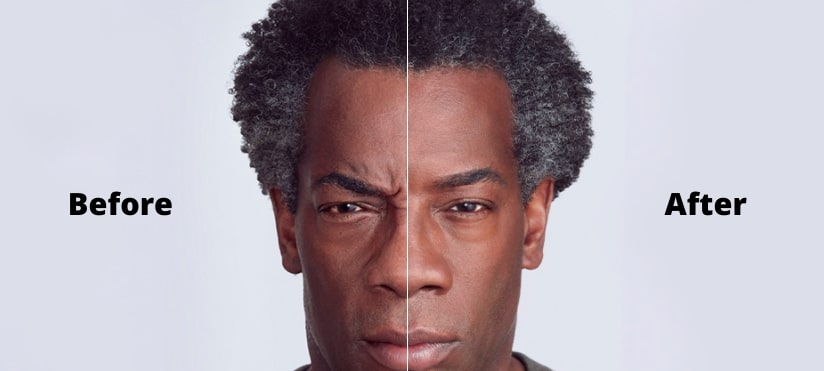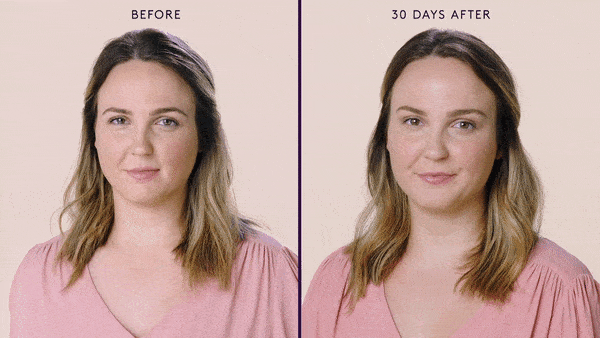
When we are talking about BOTOX® for the forehead, we first should rewind to what Botox truly is and how it became “the drug that’s treating everything.” Many times Botox gets mixed up with other injectables or fillers and we should clarify before looking into specifics. Botox is a company branded injectable neurotoxin by the bacteria Clostridium botulinum owned by the drug maker AbbVie. Botox was first approved by the FDA to treat strabismus, which is crossed eyes. It truly took a different route for what it was intended for and became popular in the beauty world for getting rid of wrinkles.
Not just women, but men have started to use Botox for wrinkles for the forehead and it has grown into clinics worldwide as the go-to injectable for wrinkles. Other than getting rid of wrinkles, Botox is being used on specific parts of the body for spasms, excessive sweating, overactive bladder and lazy eye. Botox usage has been growing and has been growing the list of approved FDA treatments for many body deformities.
Why is Botox Done on the Forehead?
Foreheads have been known to show wrinkles for both men and women after their 20’s due to the frontalis muscle on the forehead and mostly towards our natural aging process. Other factors such as lifestyle choices and repeated muscle contractions of the face may cause lines gradually such as raising eyebrows and excess stress due to yelling.
To prevent this and block the nerves from showing the wrinkle lines on the forehead, Botox is a good choice to help combat this. To get rid of wrinkles and frown lines around the forehead, Botox goes deep to temporarily block the nerves that connect to the muscles of the forehead. Within days of treatment, you will notice your skin to be smooth with movement of the facial muscles. You will see the difference in frown lines, crow’s feet and forehead lines when injected in the areas that you want to look visibility smoother.
Botox Forehead Before and After

How Botox Works in the Forehead?
Everytime you hear a voice, move your hands or speak a language, millions of neurons inside your brain send messages all over your body for these functions to occur. These same functions work your face muscles that help you contract and have facial expressions. These electrical signals that reach the forehead to show lines as you contract your face can be temporarily blocked with Botox filler.
Electric transmission to the muscle is known as acetylcholine and it is the primary substance that receives the message to contract the face and forehead. Botox works by blocking the nerve signals to reach the muscles and reduces the movement that causes wrinkles and lines to show.
Botox works in the forehead by traveling into muscle and the neurotoxins spread to the nerves where it binds and prevents the release of neurotransmitters to move forehead muscles. In common terms, it’s like your forehead has become paralyzed at the site of the injection.
Botox Checklist After Botox
When finishing Botox treatment for the temple, you will need to follow a checklist to ensure the Botox remains intact. Botox aftercare is very important to get the best results and below is a checklist for Botox aftercare:
- Do not touch or massage treatment area for 24 hours
- Avoid Sunlight and UV rays for the next 2 weeks
- Do not lie down for the first 5 hours after treatment. Sitting down is fine.
- Do not perform any activities after treatment such as heavy lifting, straining, carrying, or heavy movement for the day
- Do stress facial muscles to help Botox find its way to the muscle areas
- Do not wear any headbands or hats
- Refrain from taking any supplements and over the counter medications for the first 24 hours
- Apply ice to areas where you are bruised for 10 minutes every hour to reduce bruising
- Results will remain 3-5 months after injection
- Avoid smoking or consuming alcohol
How Many Units of Botox for Forehead
When looking at how many units of Botox will be injected in the forehead, it all depends. The manufacturer of Botox Cosmetic suggests a maximum of 30 units in the forehead area. For first time users, especially people with different facial complexions, different dosage amounts will be recommended by the nurse or doctor injecting the Botox.
Botox injections are usually 3 to 4 months apart from each other, but for first time users, you may need to see your center for treatment after 2 to 3 months for a touch up.
How Much is Botox for Forehead?
Depending on the area of treatment and how many units of Botox you would need, Botox usually runs from $10 to $15 per unit, and if you’re doing it on the forehead, it would run you around $200 to $450 of total price.
Is Botox Safe for Forehead?
Botox is FDA approved and may be used on forehead lines, lateral canthal lines and glabellar lines. Treatment should be only performed by a professional such as a doctor or registered nurse as it’s a medical injection and requires caution. Receiving too much is also an added issue as your face will be frozen without having any expression. Possible side effects may include skin dryness, crooked eyebrows, headache, and droopy eyelids.
Alternatives of Botox
Botox is not the only cosmetic injection that helps with wrinkles and fine lines. Other treatments and injectables are out there helping people treat their face. Botox has a strong brand name and that is why it has taken over the market.
Other alternatives to Botox include:
- Dermal Fillers
- Acupuncture
- Chemical Peels
- Face Patches
- Microcurrent
- Oxygen Therapy
- Radiofrequency Microneedling
How to Find the Best Botox Specialist
When it comes to finding the best Botox treatment center in your town, only search for professionals that are qualified to give injections such as dermatologists or plastic surgeons. For a secondary professional who is qualified may include Registered Nurses, PA’s, and certified Botox administrators.
If you’re living in Los Angeles, California, then you don’t need to search no more as Dr. Som is a board-certified plastic surgeon that has a specialty in Botox treatments. You will go through the best treatment plan after full examination and recommendation by Dr. Som. For appointment please call (310)-919- 4179.
Previous Post Next Post